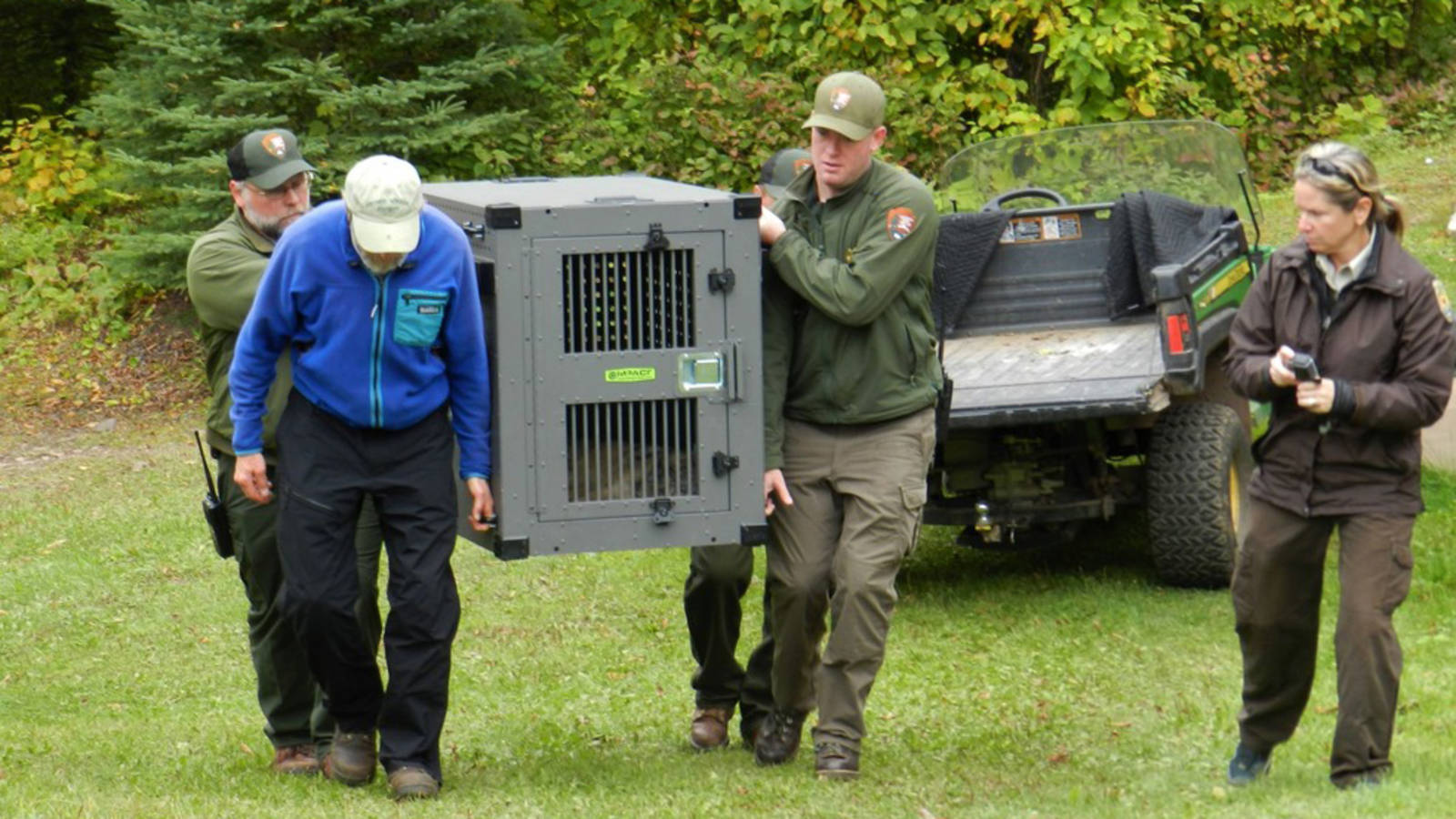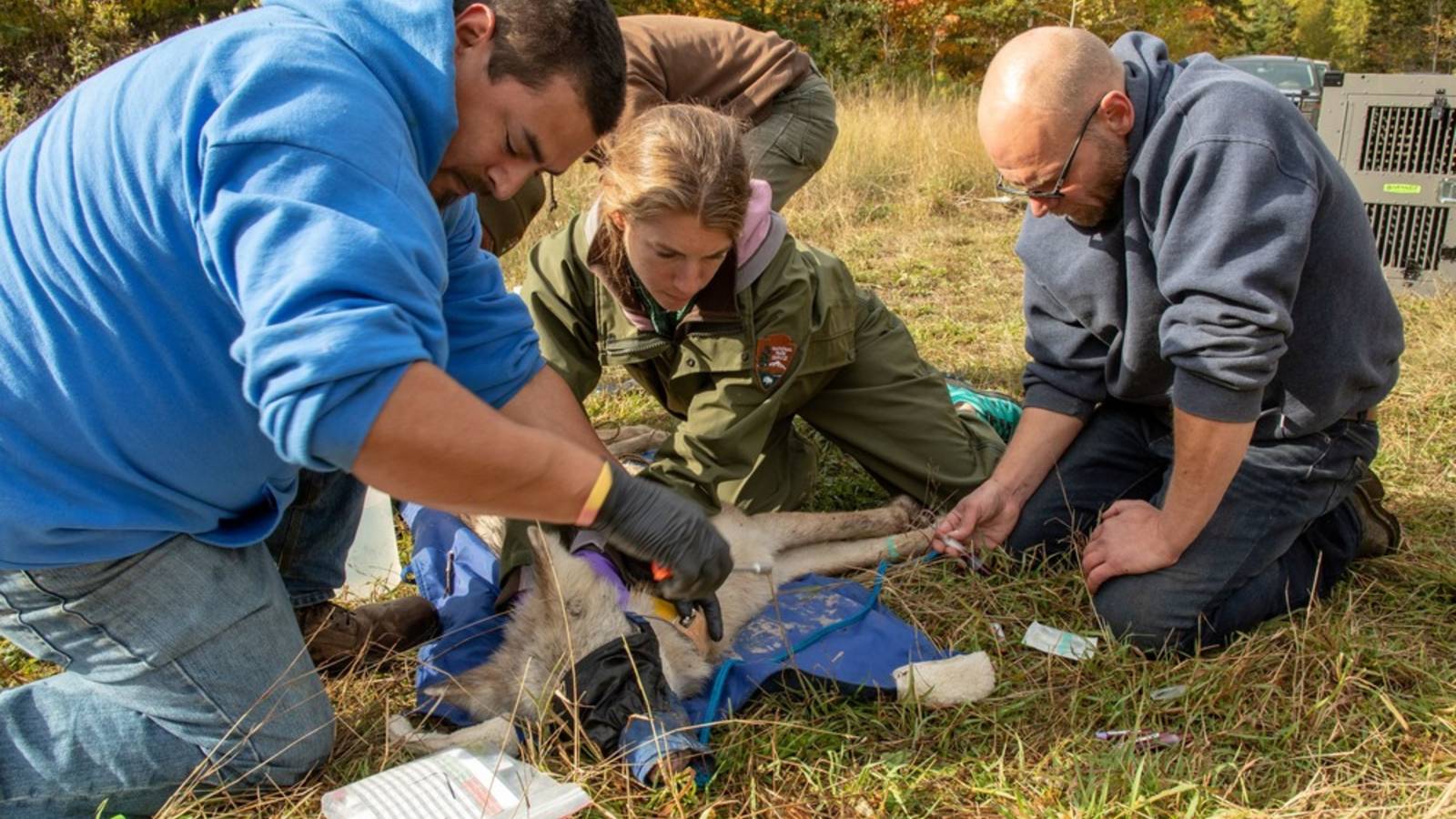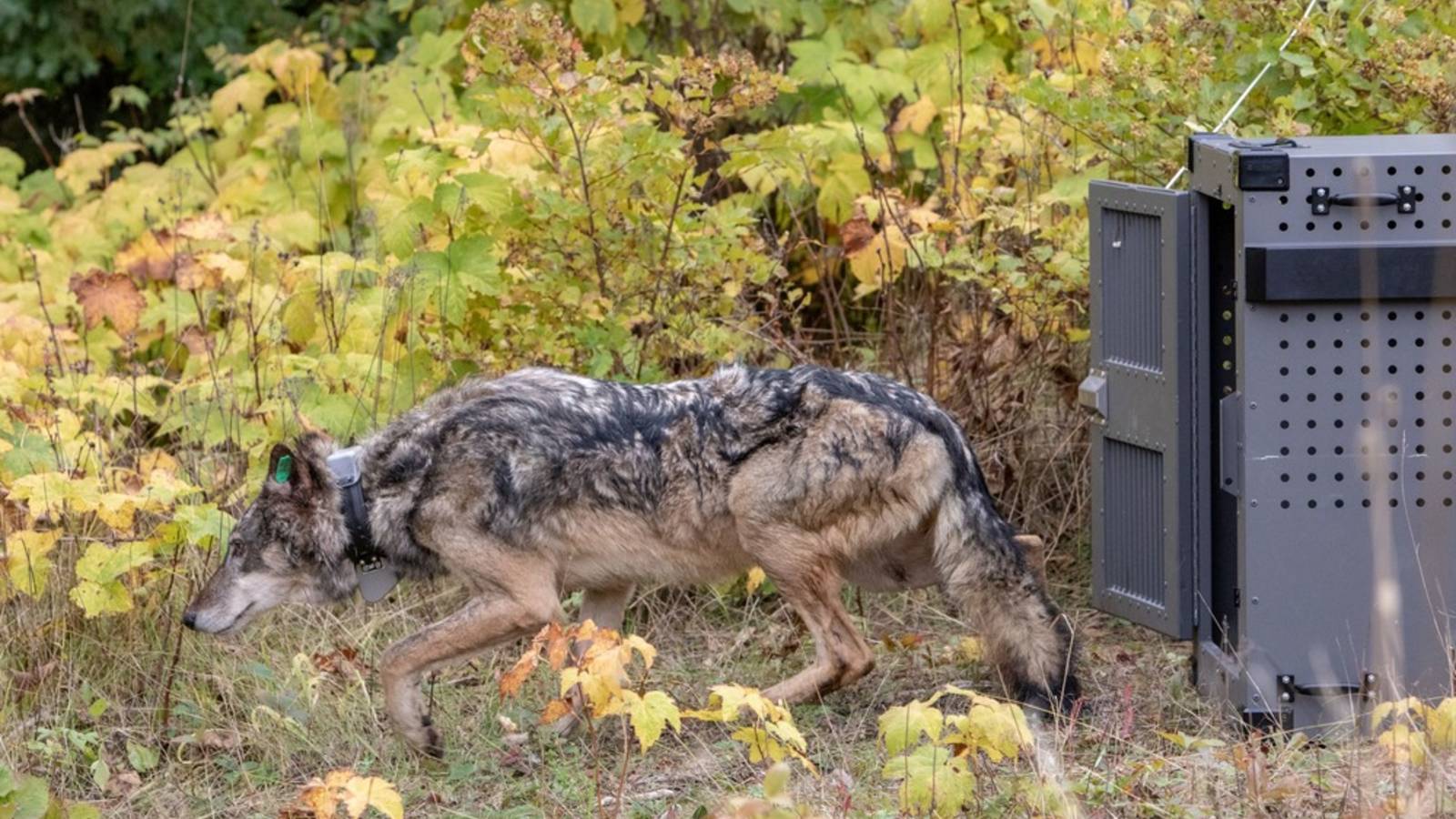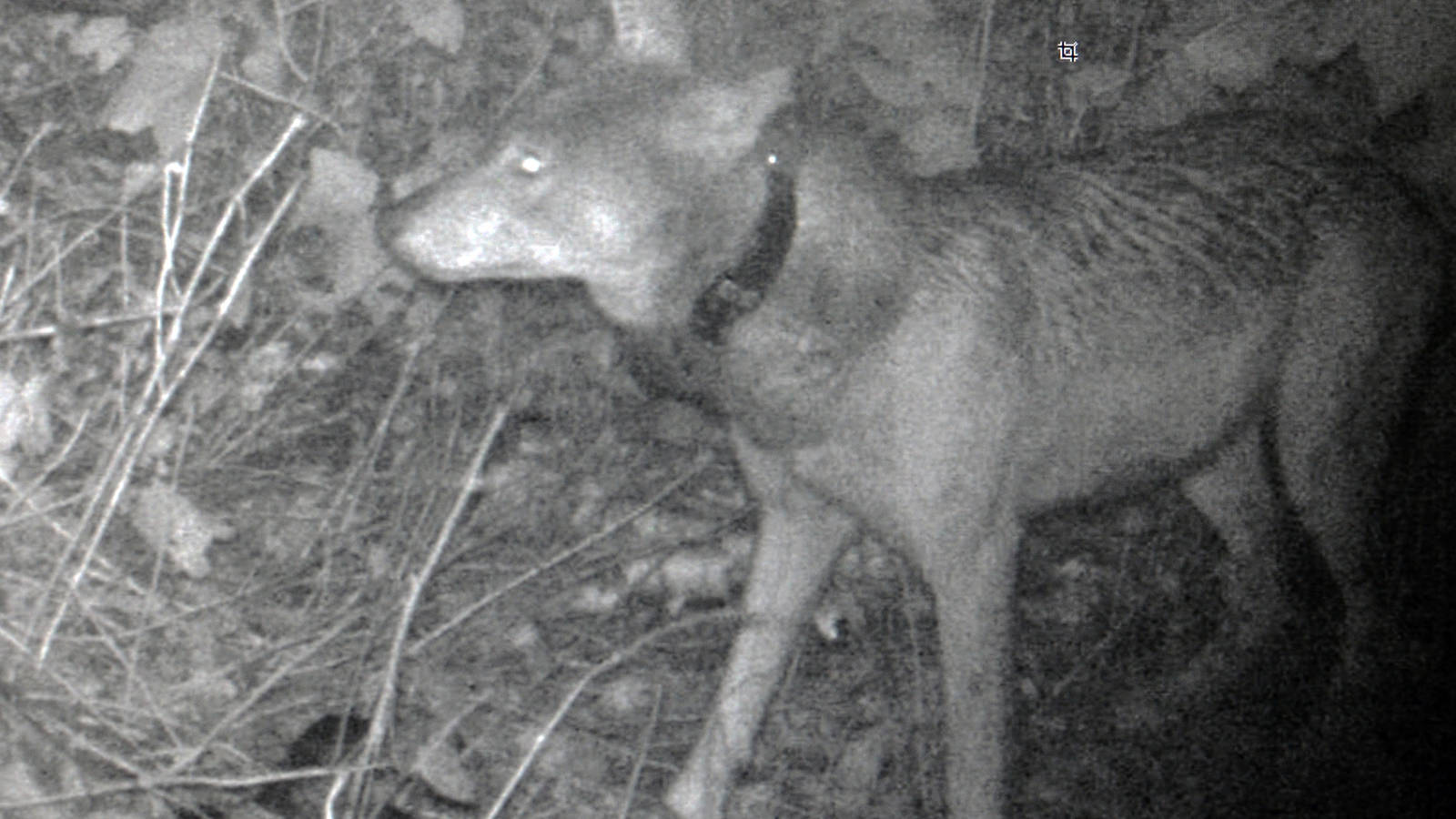Isle Royale National Park is one of the most memorable, wild and unique national parks in the country. This remote island, located in the frigid waters of Lake Superior, is 99% federally designated wilderness and hosts the longest continuous study of any predator-prey system in the world.
While many species call Isle Royale home, the relationship between the island’s top predator, the gray wolf, and its top prey, the moose, is critical to the overall health of the island.
Scientists have studied this relationship for over 65 years, and their data has helped us to understand the connection and impact these populations have within the ecosystem.
Wildlife Imbalance Leads to a Long-Term Approach
Over the park’s history, as many as 50 wolves have lived on the island, but researchers started documenting an alarming decline in the wolf population after a canine virus was introduced to the island in the early 1980s. Later, warming temperatures significantly reduced the formation of ice bridges in winter that allow new wolves to migrate to the island from the mainland. By 2018, just two wolves remained. At the same time, the moose population was increasing 20% each year due to the lack of predation, creating cascading impacts on many other park species, including the trees and other vegetation the moose devour as food.
The National Park Service developed a long-term approach to address the imbalance in the Isle Royale ecosystem. Park staff consulted with scientists and Tribal nations and gathered public input to analyze different possibilities for addressing the problem. Through this process, the Park Service adopted a plan to introduce 20-30 wolves to the island over a three- to five-year period to bolster the wolf population.
Park staff began the restoration in 2018 with the arrival of four gray wolves from the Grand Portage Band of Lake Superior Chippewa in Minnesota. In 2019, park staff partnered with Michigan and Ontario, Canada, to bring another 15 wolves to the park. All relocated wolves were captured in the wild, carefully transported and released with tracking collars to help researchers monitor their movement.
Staff carry the crated wolf to the release site while veterinarian Samantha Gibbs (USFWS) observes.
NPS / Molly CooperRoger (Poe) Deschampe Jr. and Seth Moore of Grand Portage work with NPS Wildlife Vet Michelle Verant to collar a wolf that they released shortly after near Grand Portage.
NPS / Jim PeacoThe last glimpse of the third wolf relocated to Isle Royale.
NPS / Jim PeacoTrail camera photo of the first female wolf released on the island. Captured 9-27-18.
NPSMichigan Department of Natural Resources wildlife technician Brad Johnson, right, and Nick Fowler, graduate research assistant with the State University of New York’s College of Environmental Science and Forestry take measurements of a gray wolf captured Sept. 6, 2019 in Michigan’s Upper Peninsula. Looking on are National Park Service veterinarian Michelle Verant and Michigan DNR veterinary specialist Dan O’Brien.
MI DNR / John PepinWolf Relocation and Reproduction Successful on Isle Royale
According to a 2024 report, there are approximately 30 wolves on the island, which is the population goal for the park’s recovery plan. There are now several wolf packs and new pups, which demonstrate a healthy population.
Isle Royale’s estimated moose population is down 14% from the previous year. Researchers note that the decline is largely due to the return of wolf predation, and they are optimistic this trend will allow trees to survive and grow.
While there is more balance between wolves and moose today, these species face ongoing threats from climate change. Balsam fir, a major food source for moose, has been devastated by infestations of spruce budworm, which impacts their growth. Tick populations are increasing on the island, which has been a cause of moose calf mortality across the nation. And ice bridges still rarely form, which continues to threaten wolves’ genetic diversity.
NPCA will continue to support the park’s efforts to keep Isle Royale’s ecosystem in balance and highlight how the wolf recovery effort and research can inform wildlife management at other national parks.
Get Action Alerts
Want national parks in your inbox? Sign up for NPCA email updates to receive news, features, and opportunities to make a difference! You can unsubscribe at any time.




